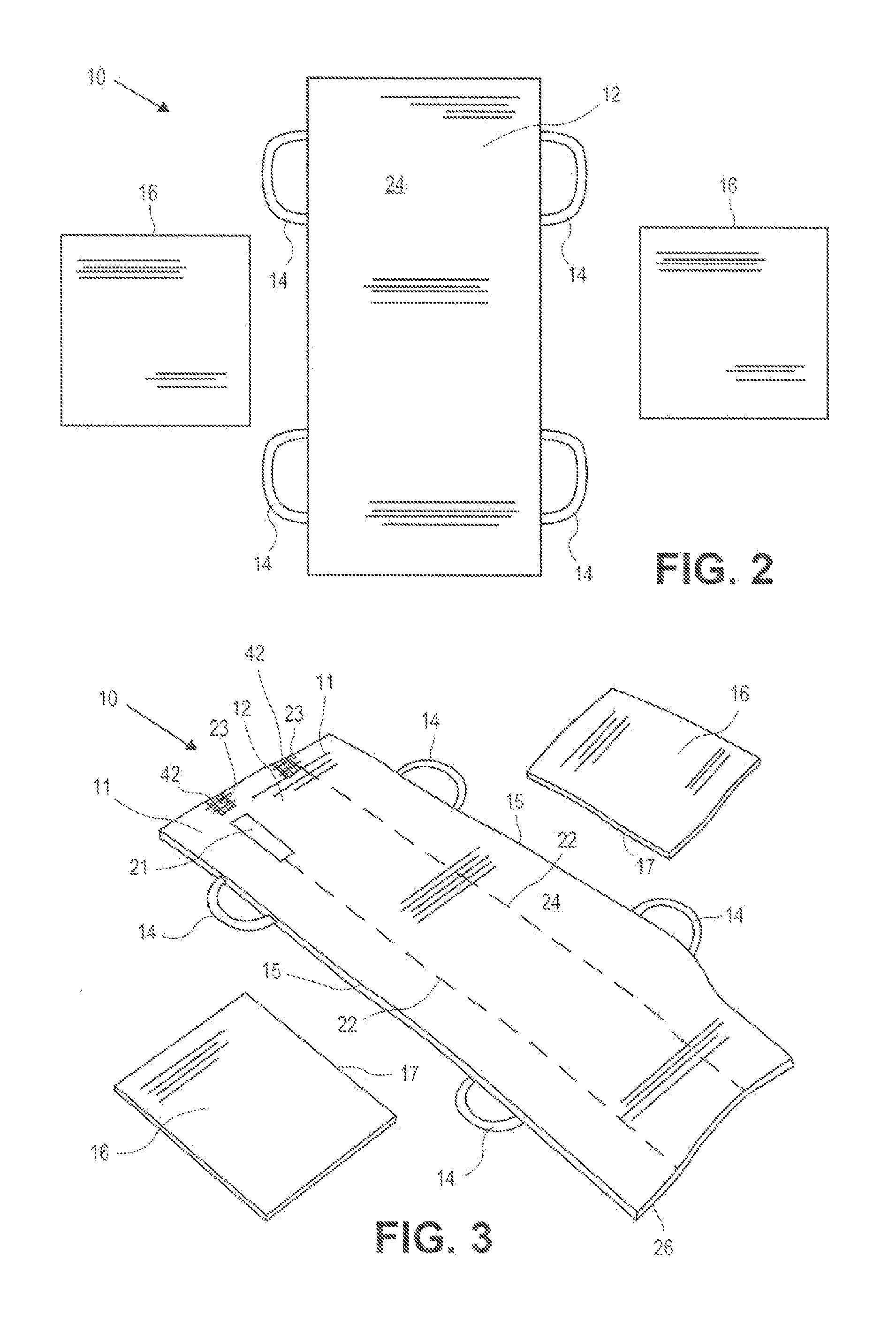Patient positioning device
a positioning device and patient technology, applied in the field of medical safety devices, can solve the problems of patient injury, difficult procedure of hospital staff in transferring patients from one support platform to another, and possible difficulties for patients and hospital sta
- Summary
- Abstract
- Description
- Claims
- Application Information
AI Technical Summary
Benefits of technology
Problems solved by technology
Method used
Image
Examples
Embodiment Construction
[0071]A patient experiences a multitude of stages when undergoing surgery. FIG. 1 is a flowchart of possible surgical events 100. The process starts in a pre-operative area. At step 102, the patient waits here before entering the operating room for surgery. Next, the patient is transferred into the operating room and at step 104, the pre-induction phase begins. The patient is placed on any necessary monitors such as blood pressure cuffs, Electrocardiography (EKG) electrodes, pulse oximeter, intravenous therapy (IV), or the like. At step 106, or induction, the patient is administered anesthesia for surgery.
[0072]At step 108, the patient is positioned for surgery. Depending on the type of surgery, the patient may be positioned in a prone, supine, lithotomy or lateral decubitus position. During this time the patient's body parts are often exposed to cold, ambient air normal in an operating room. Loss of body heat is a concern during the surgical process and the patient's body may becom...
PUM
 Login to View More
Login to View More Abstract
Description
Claims
Application Information
 Login to View More
Login to View More - R&D
- Intellectual Property
- Life Sciences
- Materials
- Tech Scout
- Unparalleled Data Quality
- Higher Quality Content
- 60% Fewer Hallucinations
Browse by: Latest US Patents, China's latest patents, Technical Efficacy Thesaurus, Application Domain, Technology Topic, Popular Technical Reports.
© 2025 PatSnap. All rights reserved.Legal|Privacy policy|Modern Slavery Act Transparency Statement|Sitemap|About US| Contact US: help@patsnap.com



